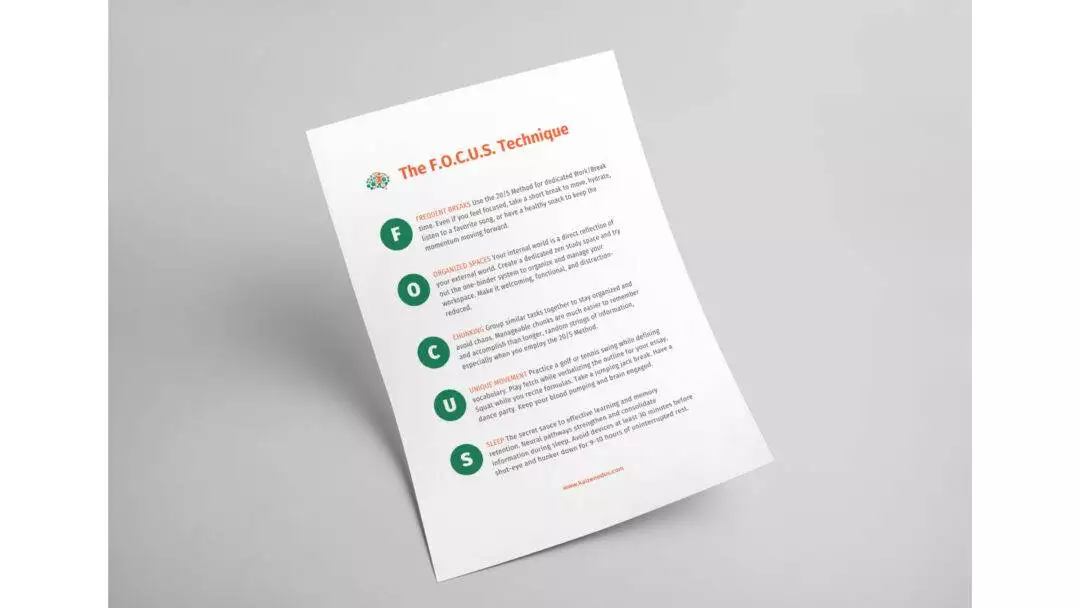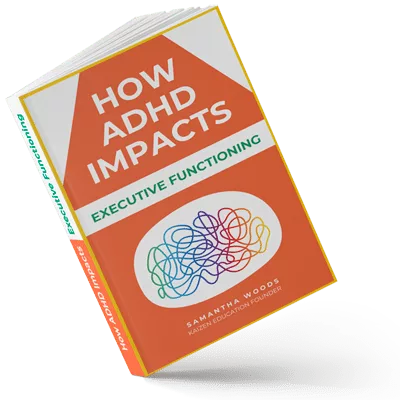Develop your child’s sustained attention skills with the FOCUS technique!
One of the biggest myths about people with ADHD is that they lack attention. ADHD is an Attention Deficit disorder after all, right?
Wrong!
Many people with an ADHD diagnosis actually have an abundance of attention. Unfortunately, their attention is often misdirected and mistaken for inattention and distraction.
This results in a deficit of attention on certain tasks that an ADHDer’s brain deems boring or undesirable and ultimately affects their ability to complete these tasks. This is a huge problem as focus is the gateway to learning and an important skill for academic and personal success.
Sustained attention is an executive function that, like other executive functions, is a teachable and learnable skill.

What is Sustained Attention?
Sustained attention is the capacity to maintain attention on a situation or task despite distractibility, fatigue, or boredom.
This executive function skill looks different depending on the age and individual. For example, a young child may be expected to complete a 5-minute chore with minimal supervision. A teenager, on the other hand, can attend to homework, with short breaks, for 45-60 minutes.
Children with ADHD tend to be behind their peers in executive age. They often struggle to wrangle their brains into giving attention to dull or uninteresting tasks. This is why the same child who can read an entire book in one sitting can struggle to fold laundry for more than a few minutes.
How to Develop Sustained Attention and Improve Focus in ADHD
The F.O.C.U.S technique is perfect for developing sustained attention. With a bit of practice and patience, any child (or adult) with ADHD can improve their focus!
F — Frequent Breaks
Use the 20/50 Method for dedicated Work/Break time. Even if you feel focused, take a short break to move, hydrate, listen to a favourite song, or eat a healthy snack to keep up the momentum.
In my Essential Back-to-School Supply List, I recommend getting an old-fashioned kitchen timer. Don’t use a phone or computer timer. A physical timer provides a visual cue and offers less distraction.
O — Organized Spaces
Your external world is a reflection of your internal world. Create a dedicated zen study space and try out the One Binder System to organize and manage your workspace. Make it welcoming, functional, and destruction reduced. Post visual reminders to cue habits and behaviours.
C — Chunking
Group similar tasks together to stay organized and avoid chaos. Manageable chunks are easier to accomplish than longer, random strings of information, especially when using the 20/5 method.
U — Unique Movement
Practice a golf or tennis swing while defining vocabulary words. Play fetch while verbalizing the outline of an essay. Squat as you recite formulas. Take a jumping jack break or a dance party. Your brain is engaged when your blood is pumping.
S — Sleep
A good night’s sleep is the secret sauce to effective learning and memory retention. Neural pathways strengthen and consolidate information during sleep. Practice good sleep hygiene to get the best results! Avoid devices for at least 30 minutes before shut-eye and hunker down for 9-10 hours of uninterrupted sleep.
A Final Parenting Tip
As an adult supporting a child with ADHD, it’s important to encourage feelings of empowerment and calm. Your child might not be able to focus for 20 minutes straight at the beginning. They may still misplace papers or hop from task to task. Avoid the temptation to nag or blame. Instead, remind them when they need a break, or help them chunk their tasks into manageable steps. You have decades of practice on them – share your expertise!
Print the Kaizen FOCUS Technique and post it in your child’s zen study space while they are learning and practicing the technique. In sight = in mind!


